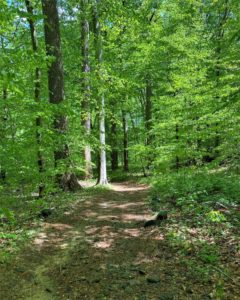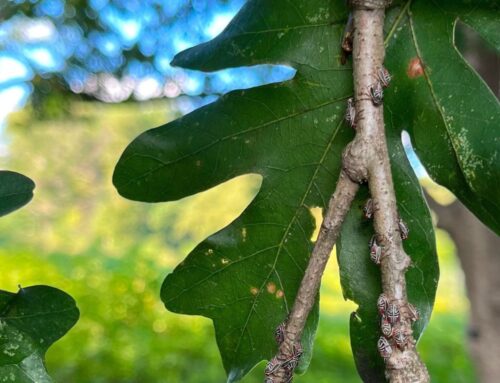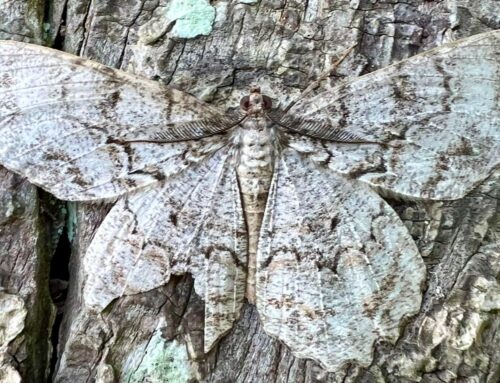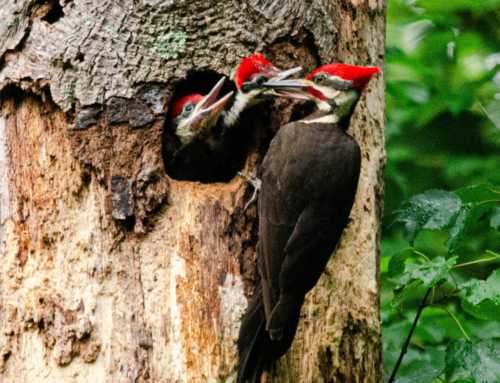Close your eyes and imagine yourself right now at Tyler Arboretum, gazing over a viewscape of lush woodlands. It’s a warm, sunny day, and hiking trails invite you to escape the heat and enter a space filled with tall pines and leafy tulip trees. Immerse yourself in the sights and sounds of this biosphere of trees, and find relief from harsh rays of direct sunlight. Enjoy this opportunity to take a stroll in the fresh air and cooler temperatures.
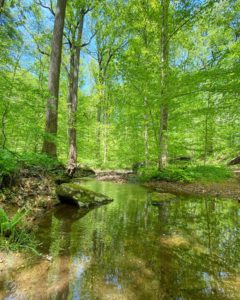
How exactly does a forest keep us cool? Forest temperatures are affected mainly by two processes: evapotranspiration and albedo. Evapotranspiration is the combination of evaporation (the process by which water is transferred from a liquid to the atmosphere as a vapor) and transpiration (when water is released from plant leaves in the form of a vapor). As water is changed into a vapor by these two processes, the surrounding air is cooled.
Albedo takes into account how much radiation from sunlight is absorbed or reflected by the earth’s surface. A high albedo means there is a high rate of reflection indicating that more of the radiation is returned to the atmosphere, causing cooler temperatures.
Are all forests the same temperature? Many things can affect evapotranspiration and albedo, causing significant variations in the cooling effect of forests in different parts of the county. Both processes are strongly influenced by rainfall and snow, over time and across a region. This affects relative humidity, among other things. Wind/air movement and the type of plant can also affect how much water vapor a plant will give off.
Woody plants generally give off less moisture in transpiration than herbaceous plants because of the difference in foliage. Conifers have higher rates than deciduous plants, especially in the dormant and early spring seasons, since they retain their needles.
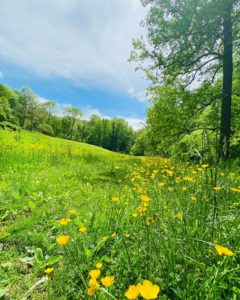
Latitude (how far north or south of the equator you are), plays a major role in the cooling effects of forests. Scientists studied air temperature data collected in forested and cleared areas across the United States and Canada and also have investigated the effects of forests on the local climate. It turns out that forests located between 35° and 45° North latitude have similar temperatures to the non-forested lands in that area (this is where Tyler Arboretum fits, located ~39.9° N). Temperate forests (like Tyler), show moderate cooling in summer and moderate warming in winter, due to the mixed (deciduous and coniferous) nature of the plant life, moderate rainfall, and moderate temperatures.
However, if you are in forested land north of 45° N (say in Maine), the air temperature will be warmer than if you are in open land. This is where you would find boreal forests, a biome characterized by coniferous trees, high snowfall, and low temperatures. They tend to have strong warming in winter and moderate cooling in summer.
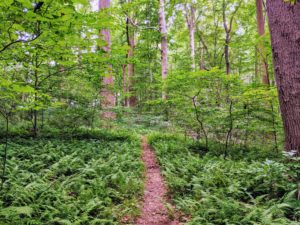
When you are exploring a forest south of 35° N (say in south Florida or Puerto Rico), you will find the air temperature will be cooler in the forest than in the open land. Tropical forests, with their higher temperatures, increased rainfall, and the very special closed tree canopy, have a strong cooling effect throughout the year.
The trees and plant life, rainfall, solar radiation, and temperature all play a role in how our forests function and perfectly illustrate both the interconnectedness and diversity of nature. All this variation certainly makes it tricky to pack for a trip! But the one thing you can be sure of is the next time you are looking for a little solace from the summer’s heat, head on over to Tyler and bathe in the shadows of the hemlocks and beech trees. Step into nature’s air conditioning and enjoy the cool temperatures on bright, sunny days.
